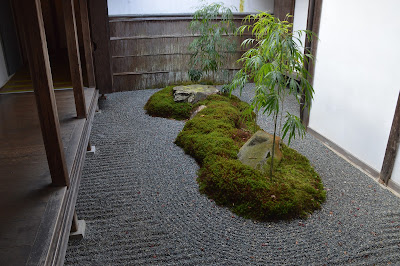Winter green
Well, seeing it won't snow much in January, I went looking for green in the garden last week. And I found lots of it--in my mosses, delightfully growing with the rain and temperature in the 40s.
And when the sun came out, simply delightful! Too bad I had to get to be 62 before I discovered their beauty. I just read an article in The American Gardener (of the American Horticultural Society) on "plant blindness." Coined in the 1990s by botanists, it means a tendency to ignore plants in one's surroundings, a "malady" suffered by a surprisingly large share of people, research shows. I notice that when various workers, from cable staff to plumbers, walk in parts of my gardens and never notice anything out of the ordinary (or they don't mention it). Then on garden tours I have trouble keeping my head from exploding (from the comments). Anyhow, I had such blindness of mosses until I stumbled upon a single small moss garden in 2005. Since then, I feel as a six-year old, ignorant of 20-200 vision for six years, must feel when first wearing glasses.
The first three photos shows the west end of my Japanese-style garden, which has several mounds of moss and many moss-covered rocks.
The next photo is of a 10-inch long piece of split bamboo with four species of moss, from left to right: Anomodon rostratus, Brachythecium salebrosum, Plagiomnium cuspidatum, and Hygroamblystegium varium. The next two photos shows the larger and aggressive Brachythecium invading the Anomodon (in a couple of years, the Anomodon will be history without "weeding"). However, the B. salebrosum is actually rising up the ranks of my favorite mosses, and the second last photo shows it growing on a rock I found.
The last photo is of an incredible moss, as it changes from a dormant dry brown to a beautiful yellow green only five seconds after having water rehydrating its leaves. Quite a sight to see. It prefers growing on granite rocks in full to partial sun.








































